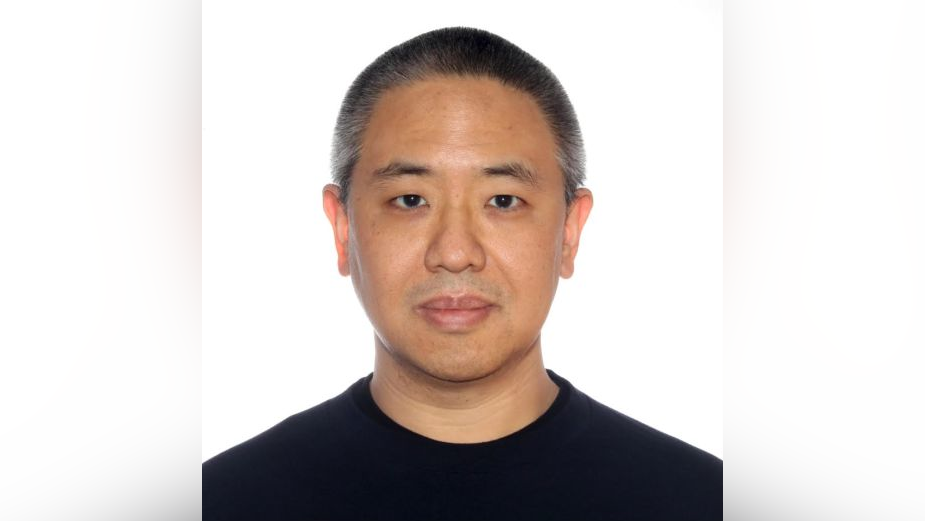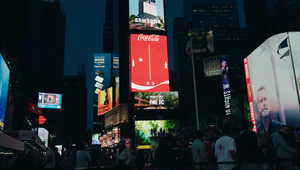
Planning for the Best: Feeding Curiosity with Grey New York’s Dan Ng

Dan Ng has operated as a strategist within a large chunk of advertising's most revered and established agency brands. Currently the chief strategy officer at Grey New York, Dan has had stints at Crispin Porter + Bogusky, DDB London and TribalDDB, Droga5 New York and Tokyo, Anomaly, BBDO, TBWA\Chiat\Day, and Wieden+Kennedy.
He is a believer in the power of strategy to open up creative opportunities, "when so often it's used to take opportunity away". For a deep dive on Dan's approach to modern day strategy and why his job title might more suitably be ’chief strategy and planning officer’, read on.
LBB> What do you think is the difference between a strategist and a planner? Is there one?
Dan> So many planning jobs have become ‘strategy roles’. It makes sense – with fragmented marketing plans and budgets, who wouldn’t want to define the longer-term vision? It feels like the more valuable exercise. Over time, planning has become underrated: writing briefs, working out engagement plans, measuring and optimising the work, etc. Not continuing the process from strategy into planning too often results in strategic plans that are neither strategic nor plans.
It helps to have clarity on what makes for good strategies and for good plans. Good strategies have to be simple, repeatable and easy-to-follow, so they can guide tactical decisions over time. Meanwhile plans have to get specific, identifying opportunities as well as how to make the most of them. There shouldn’t be a difference between a strategist and a planner – it should be the same person – but there really should be clarity about when you need a strategy and when you need a plan.
LBB> Which description do you think suits the way you work best?
Dan> You have to be both a strategist and a planner to do the job properly. To keep ourselves honest, most job titles here remind us to deliver both strategy and planning. ‘Brand planners’ work with the long-term brand in mind, even as they plan for specific creative opportunities. And our ‘data strategists’ work with the specifics and minutiae of fresh facts, even as they model a better future.
As teams, we’re always covering both long-term and tactical goals - imagining where we should be, and then being specific about how to get there. I suppose that means my title should be, properly, ’chief strategy and planning officer’, but hey, CSO isn’t ridiculous enough?
LBB> We’re used to hearing about the best creative advertising campaigns, but what’s your favourite historic campaign from a strategic perspective? One that you feel demonstrates great strategy?
Dan> I love this question. So much of our value, as an industry, hinges on creating current cultural value for our clients - sometimes it’s easy to forget that there’s a whole history of great thinking to learn from, and a lot of it outside our industry. At Grey our 105-year history has famously effective campaigns like ‘Go Greyhound and leave the driving to us’, or ‘Choosy moms choose JIF’. And we have more recent campaigns like ‘Nose Blind’ for Febreze or ‘We put that $*#@ on everything’ for Frank’s Red Hot. We’re spoiled for choice.
If we’re really talking historic, though, I’d choose the UK’s ‘V for Victory’ campaign during World War Two, for both great strategy and planning. The enduring image we have of the campaign is Winston Churchill flashing the ‘V for Victory’ hand sign. But dig in and you’ll see a more sophisticated campaign across Europe. How do you make people in enemy-occupied countries feel powerful? The strategy was to give them a way to be counted, creating a small meme - V - that could be applied without repressive occupying forces seeing.
The planning was in making that V spread quickly and defiantly. As a chalk mark on the street. In Morse Code (•••– , the same rhythm as the opening notes to Beethoven’s Vth Symphony). On pamphlets. As that Churchillian hand sign. Words starting with V in the local language (meaning victory, or freedom, or life) were broadcast over borders by radio, along with Beethoven’s Vth. And then the plan was for people to spread it - with graffiti, whispers, and pamphlets. With V everywhere, locals could see that they outnumbered occupying soldiers, who could only feel unnerved.
I love the campaign for its wit and how it planned for different effects depending on which side you were on. I love that it was designed to spread across borders easily, and that it boosted confidence when so many needed it most.
LBB> When you’re turning a business brief into something that can inform an inspiring creative campaign, do you find the most useful resource to draw on?
Dan> I like to break down a big business goal into the actions of an individual, so that we know exactly what the work needs to do. In the end, it always comes down to moving a person at the other end of the communications. Sometimes hitting that business goal can be accomplished by getting a couple to have their first date night in two years at a restaurant bar. Other times, it’s getting someone to celebrate a Mexican-American holiday with a better Mexican beer when they’re buying a case at the warehouse club. Breaking down the business goal to the level of individual action isn’t just for the creative brief – it ensures that we do the more disciplined thinking about what needs to happen.
LBB> What part of your job/the strategic process do you enjoy the most?
Dan> I’ve learned that as fun as it is being right, it’s more rewarding to be wrong, early on. If you’re right all the way through, you’re never surprised, or learning, or getting into deeper understanding. That feeling of being right from the start can sometimes mean that you’re working from an undifferentiated (and ineffective) strategy.
Years ago, during a pitch for a fashion brand, a few of us senior agency leaders landed on a strategy and a creative idea early in the process. We were so proud of ourselves for having worked out our neat little answer. And then, over the course of an afternoon, the emails and text messages flooded in, a polite rebellion of strategists, planners, creative teams, and managers pointing out how we got it wrong. It stung a little to set aside the work and listen. But we won the pitch, and I learned a lot about how culture was changing – and how to get more out of the job.
LBB> What strategic maxims, frameworks or principles do you find yourself going back to over and over again? Why are they so useful?
Dan> Once you’ve worked through enough pyramids, keys, prisms, architectures, four box models, etc., you develop a healthy scepticism of frameworks. It’s easy to get untethered from what strategy really needs to do – guide future action.
Brand frameworks, especially, can become a game of abstraction. Words like ‘hope’ or ‘empowerment’ get put at the top of a pyramid, when instead the strategy might just need to set a fun tone. Or explain the product or service in a concrete and easily understood way. ‘The map is not the territory’ is a reminder not to fall in love with frameworks. When the map no longer matches the terrain ahead, it’s time to look again with fresh eyes.
LBB> What sort of creatives do you like to work with? As a strategist, what do you want them to do with the information you give them?
Dan> Sceptical and engaged creative people will always get the best out of strategists and planners. I think ‘information’ is the wrong currency here. Information is everywhere - showing off your knowledge in a briefing is pointless when every creative team looks up the brand on Wikipedia during their morning commute. If your briefing is a list of facts, you’re not going to get much back from the teams. You get better results when you bring strong beliefs to the conversation – and expect the conversation to develop a collective understanding of the opportunity. You’ve got to have skin in the game.
LBB> There’s a negative stereotype about strategy being used to validate creative ideas, rather than as a resource to inform them and make sure they’re effective. How do you make sure the agency gets this the right way round?
Dan> ‘Back-justification’ gets a bad rap, but sometimes the process leads you somewhere better, and you must be open to that. If the creative idea is bigger and better than the strategic planning you started with, I’d take that as a win. Going back and making sure the logic and the storytelling work – it’s totally valid. It doesn’t make strategy and planning less important. It just means that the process is sometimes iterative, and that’s ok.
I’m lucky to work with creative leaders who are engaged from the beginning - who are part of the strategy and planning process, and keep us on through the creative process, too. Strategy and planning and creative are all products – having strategic, planning, and creative people in the conversation, start to finish, makes everything better.
LBB> What have you found to be the most important consideration in recruiting and nurturing strategic talent?
Dan> If I had to pick one trait for talent in strategy and planning, it would be curiosity. It’s the best predictor of success - wanting to spend time with data, with people and with problems, to understand what’s going on. If you have the curiosity, other traits come along for the ride.
Curiosity makes you rigorous in your pursuit of solutions. Curiosity drives you to find out more about human behaviour, and what’s possible in the creative work. Curiosity is something that can’t be trained, but it does have to be fed – it’s always worthwhile getting good at research and deepening your understanding of how things work.
LBB> In recent years it seems like effectiveness awards have grown in prestige and agencies have paid more attention to them. How do you think this has impacted on how strategists work and the way they are perceived?
Dan> It’s good that more clients and creative people want to win effectiveness awards. Honestly, I haven’t seen it change how we work – we have always and will continue to focus on the effects of the work. And while it’s sometimes good for client retention, I do question the effectiveness of effectiveness awards – it doesn’t seem to be much of a factor in attracting new business or recruitment.
LBB> Do you have any frustrations with planning/strategy as a discipline?
Dan> I love what we do, and whatever frustrations I have are insignificant.
LBB> What advice would you give to anyone considering a career as a strategist/planner?
Dan> Put yourself out there with a point of view. Make a strong case, and then be open to the conversation. But don’t set out trying to please everybody with your thinking.












